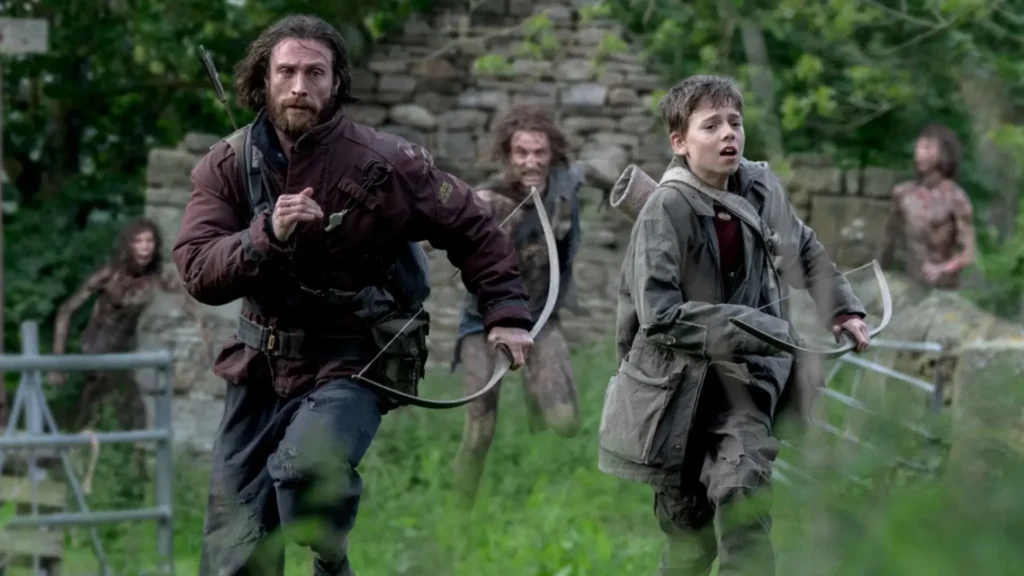It’s been a long, long wait. Twenty-eight years, to be precise, since Danny Boyle and Alex Garland first redefined the zombie – or rather, “infected” – genre with the visceral, heart-pounding “28 Days Later.” Now, the dynamic duo is back with “28 Years Later,” and it’s finally in cinemas (released June 20th in the US and June 19th in the UK!). But does this long-awaited third installment truly live up to the hype and deliver the next evolution of post-apocalyptic horror? For plotwit, let’s dive in.
The Rage Returns: A Legacy to Uphold
When “28 Days Later” burst onto the scene in 2002, it wasn’t just another horror film. It was a game-changer, injecting raw urgency, a terrifyingly fast new breed of infected, and a bleak, human-centric narrative into a genre that was, frankly, shuffling. Its sequel, “28 Weeks Later,” amped up the action and scale, but many fans have always yearned for the return of Boyle’s distinct directorial vision and Garland’s sharp writing.
“28 Years Later” sees that wish granted, with both Boyle directing and Garland penning the script. This reunion alone set expectations sky-high. The core question on everyone’s mind: can they bottle that lightning a third time, especially in a landscape saturated with zombie flicks and post-apocalyptic dramas?
A New Chapter, Familiar Fears
Set nearly three decades after the initial outbreak, “28 Years Later” shifts its focus to a new generation. The Rage Virus has been contained in continental Europe, but the British Isles remain a quarantined, desolate wasteland. We follow Jamie (Aaron Taylor-Johnson), his ailing wife Isla (Jodie Comer), and their son Spike (Alfie Williams), a 12-year-old who has never known a world without the infected. Their perilous journey to the mainland uncovers not only new, terrifyingly evolved “Alpha” infected but also sinister human elements – a signature of the franchise’s grim exploration of humanity’s dark side.
Critics are largely praising the film for its ability to maintain the series’ signature intensity while evolving its themes. Boyle’s “jittery digital aesthetic” (with some scenes even shot on iPhone 15s!) and relentless tension are back, making for a truly visceral experience. But beyond the scares, the film delves deeper.

More Than Just Gore: A Human Drama at its Core
What sets the “28” franchise apart has always been its focus on the human element, and “28 Years Later” is no different. Many reviews highlight its surprisingly emotional core, portraying a coming-of-age story for Spike and exploring themes of family, loss, and the nature of survival in a world that has essentially gone medieval. The performances, particularly from young Alfie Williams, Jodie Comer, and Ralph Fiennes in a standout role as a reclusive doctor, are being lauded for adding significant emotional weight.
The film has been described as a “meditation on life, death, and the world,” reflecting post-Brexit and pandemic anxieties about isolationism and the lingering shadows of the past. It’s a film that isn’t afraid to get “weird” with its narrative, even including a divisive cult led by Jack O’Connell’s character, Sir Jimmy Crystal, which ties back to the original outbreak in a chillingly unsettling way.
Box Office & The Future of the Rage
“28 Years Later” opened strong, taking in an estimated $14 million domestically on its first Friday, including Thursday previews. This makes it the biggest opening day in the franchise’s history, poised to exceed $30 million for its opening weekend! This early success bodes well for the ambitious plans.
This film serves as the first in a planned new trilogy, with a sequel, “28 Years Later: The Bone Temple,” already shot back-to-back and set for a January 2026 release. This ambitious approach suggests Boyle and Garland have a long-term vision for the Rage universe.
So, Is It the One?
“28 Years Later” isn’t just a zombie film; it’s a commentary on society, a character study, and a masterclass in atmospheric horror. While some critics note a “bumpy” ride due to tonal shifts and a clear setup for future installments, the general consensus is overwhelmingly positive. It’s intense, emotionally resonant, and visually striking, pushing the boundaries of what a “zombie” movie can be.
The verdict for plotwit? If you were hoping for a zombie film that doesn’t just deliver scares but also makes you think and feel, then “28 Years Later” absolutely delivers. It recaptures the magic of the original while fearlessly forging new, terrifying ground. It might just be the evolutionary leap the genre – and fans – have been waiting for.


